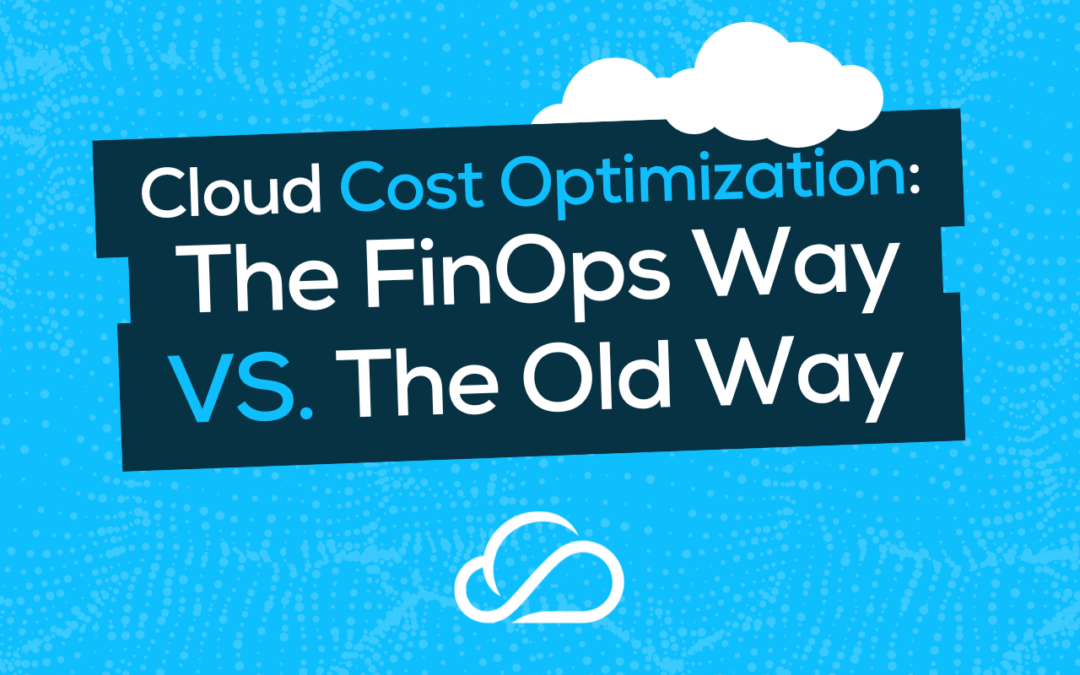There was a time when cloud cost optimization was not a thought in business’s minds. It was a dark time of overspending and improper utilization. However, over the years, times have changed, new technologies have come out, and new resources have been introduced to help businesses monitor and manage their usage better than ever before. FinOps changed the game of cloud cost optimization, and from where businesses started to where we are now, there are two completely different eras. So, as the phrase goes, we must remember history in order not to repeat it, so let’s remember what the old way of cloud cost optimization was and relish where we are today.
Cloud Computing Decisions
The management and growth of the cloud vary significantly from what it was to what it is today.
The Old Way
Before the cloud took over, businesses based their coding decisions solely on their procurement options. It wasn’t uncommon for businesses to upgrade their strategies only every few years along with equipment. This meant that if a company had ten servers, they would build software optimized for those ten servers with no updates or changes in sight until necessary upgrades were needed in the next few years.
The New Way
With the advancement of cloud services, today’s businesses do not need to make decisions solely on the hardware they have. There are no longer restraints, and companies can make decisions in a matter of minutes rather than years. This also allows for a better understanding of how the decisions made now will affect the business in the future, bringing a level of proactiveness and strategy to businesses. Additionally, cloud services provide data on what is being used, how it’s used, and where there are holes. This can help businesses make smarter decisions.
Accessibility and Data Transparency
How we look at the data acquired at the end of the month has changed drastically over the years.
The Old Way
In the beginning, highly functional products were placed above all else. As long as something worked as needed and fulfilled the task it was set to do, it did not matter how much it was or what it really meant to everything around it. Additionally, the finance department was making the decisions, not seeing the point in including engineers, as they believed it could confuse them from the work they were doing, so there was no communication through the departments.
The New Way
As technology and viewpoints evolve, we see that companies not only change their technology routinely but also have transformed the way IT is chosen and purchased. We can now see that one line of code can be the difference between $100 and $1,000. So, engineers are currently very involved with the purchasing process; many times, it is a requirement so they can see how significant of an impact they have on spending and the decisions made. Now, data transparency and accessibility go beyond just the finance department, and it is now shown to engineers, sales, product, and marketing departments to ensure everyone is well informed.
Collaboration
We might see collaboration as second nature, but this was not always true.
The Old Way
The financial department handled cost decisions and purchasing, while the engineering department handled software development choices. These two groups were never intertwined or spoke, staying responsible for their own side of things. Collaboration was not even a thought as these two departments didn’t imagine the other one to understand what was being discussed, leading to the two making decisions based on their own findings.
The New Way
Today, collaboration is the name of the game. Without it, improper decisions can be made, and money can be wasted. Within an efficient FinOps team, there is someone from each department, including finance and engineering, to ensure everyone is on the same page, data is discussed, and future decisions are made in everyone’s interest. At its base, FinOps is the partnership between finance and DevOps, ensuring communication and collaboration between the two at all costs.
Technology constantly changes, but in the case of cloud cost optimization, change can be extremely beneficial. If you are stuck in the past, contact us to bring you to the future. Meet with the team at FinOps Oversight.

